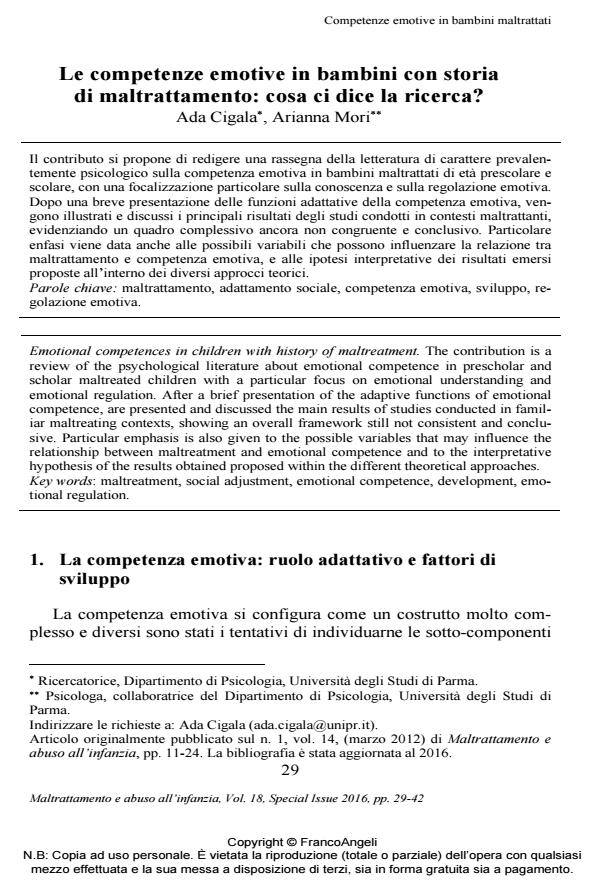Emotional competences in children with history of maltreatment
Journal title MALTRATTAMENTO E ABUSO ALL’INFANZIA
Author/s Ada Cigala, Arianna Mori
Publishing Year 2016 Issue 2016/2 suppl.
Language Italian Pages 14 P. 29-42 File size 183 KB
DOI 10.3280/MAL2016-S02003
DOI is like a bar code for intellectual property: to have more infomation
click here
Below, you can see the article first page
If you want to buy this article in PDF format, you can do it, following the instructions to buy download credits

FrancoAngeli is member of Publishers International Linking Association, Inc (PILA), a not-for-profit association which run the CrossRef service enabling links to and from online scholarly content.
The contribution is a review of the psychological literature about emotional competence in prescholar and scholar maltreated children with a particular focus on emotional understanding and emotional regulation. After a brief presentation of the adaptive functions of emotional competence, are presented and discussed the main results of studies conducted in familiar maltreating contexts, showing an overall framework still not consistent and conclusive. Particular emphasis is also given to the possible variables that may influence the relationship between maltreatment and emotional competence and to the interpretative hypothesis of the results obtained proposed within the different theoretical approaches.
Keywords: Maltreatment, social adjustment, emotional competence, development, emotional regulation
- Perspective Taking Ability in Psychologically Maltreated Children: A Protective Factor in Peer Social Adjustment Ada Cigala, Arianna Mori, in Frontiers in Psychology 816514/2022
DOI: 10.3389/fpsyg.2022.816514 - La valutazione della recuperabilità delle competenze genitoriali Michela Gardon, in MALTRATTAMENTO E ABUSO ALL'INFANZIA 1/2022 pp.87
DOI: 10.3280/MAL2022-001006
Ada Cigala, Arianna Mori, Le competenze emotive in bambini con storia di maltrattamento: cosa ci dice la ricerca? in "MALTRATTAMENTO E ABUSO ALL’INFANZIA" 2 suppl./2016, pp 29-42, DOI: 10.3280/MAL2016-S02003